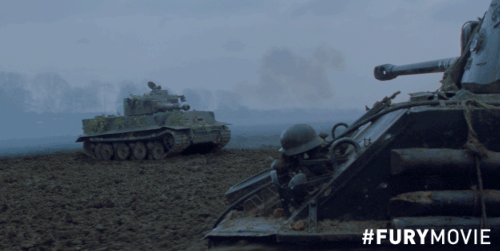I'm currently going through The Secret War, a book about various countries' intelligence-gathering efforts before, during and after World War II. It's a bewildering book that's almost equal parts believable and incredible. Roughly 90% of decrypted intelligence was ultimately useless or unused, while the remaining 10% often proved to be of so much value that the sometimes maddening quest and its costs were felt to be fully justified. Sometimes there were depressing draughts of information that lasted for months on end, as the civilian geniuses at Bletchley Park beavered away feverishly to produce something that would tip the balance against the Germany army, navy and air force. It is astonishing how much hung in the balance and how often disaster was narrowly avoided.
Before that, I read Tank Men, which was full of accounts of tank crews who served in the war. I'd heard some of the criticisms of Allied tanks before, but wasn't ready for how dark the stories in that book were. It was quite illuminating to read about how the Germans didn't have it all their own way as far as tank design went, and what it was like to be facing Tigers in a tank that had to crawl to within 600 metres to get its own gun in range. A particularly interesting phenomenon repeatedly raised was the bond that developed between the new, younger NCOs and the tank crews they commanded. The cramped, life-or-death conditions inside a tank overhauled the previously rigid command structures, and the combined arms tactics used by the Allies changed over time to match and surpass their Axis counterparts.
Anyone got any interesting historical snippets or accounts they've read about recently that they'd like to share?
EDIT: Wow. Death's got a shitload of paperwork.
Before that, I read Tank Men, which was full of accounts of tank crews who served in the war. I'd heard some of the criticisms of Allied tanks before, but wasn't ready for how dark the stories in that book were. It was quite illuminating to read about how the Germans didn't have it all their own way as far as tank design went, and what it was like to be facing Tigers in a tank that had to crawl to within 600 metres to get its own gun in range. A particularly interesting phenomenon repeatedly raised was the bond that developed between the new, younger NCOs and the tank crews they commanded. The cramped, life-or-death conditions inside a tank overhauled the previously rigid command structures, and the combined arms tactics used by the Allies changed over time to match and surpass their Axis counterparts.
Anyone got any interesting historical snippets or accounts they've read about recently that they'd like to share?
EDIT: Wow. Death's got a shitload of paperwork.




